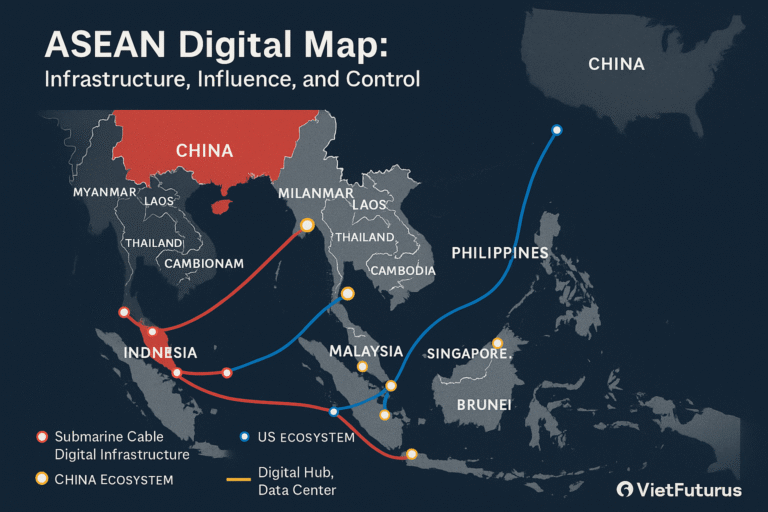Cultural Identity Refractions: Why We Write from the Edge
Cultural Identity Refractions: Opening Reflection
“Where are you from?” they ask.
“It’s complicated,” we say.
And between those two lines, an entire lifetime unfolds.
I was born between places. My grandfather grew up on the misty boulevards of Hà Nội, weaving through streets that spoke French as often as Vietnamese. My grandmother navigated beneath the crimson banners of Huế, where imperial echoes still resonate in the courtyards of forgotten palaces. Their voices—heavy with memory, textured by war, revolution, and reconciliation—shaped the very air I breathed as a child.
When I crossed oceans to explore the world, I believed language alone would carry me safely to the other side. Yet language fractures when stretched across borders. Culture refracts. Identity splinters. Home becomes both impossibly vast and achingly confined.
This is why we write.
This is why Refractions was born.
What Are Cultural Identity Refractions?
Refractions is not a mere collection of stories. It is neither detached analysis nor sentimental nostalgia. It is the sharp, jagged edge between survival and memory. It is the phenomenon where identity breaks, shifts, and reforms under the immense pressures of history, diaspora, and modernity.
We write from the fractures, not from the monuments. We do not write to claim a definitive homeland but to illuminate the blurred lines of belonging, the shifting sands beneath our feet.
Cultural identity refractions reveal:
- How culture bends under historical pressures.
- Fragments of identity carried like shards across oceans and generations.
- Strategic reinventions necessary when one’s existence falls outside of prescribed narratives.
In Refractions, we do not seek to explain Vietnam to the world. Nor do we seek to justify our existence to Vietnam.
Instead, we inhabit and explore the spaces in between—spaces without maps, names, or neatly fixed meanings.
Why We Write from the Edge
We write from the edge because mainstream narratives lie.
Because empires have a vested interest in erasure.
Because the borders drawn in textbooks rarely align with the scars and stories we carry within.
We write from the edge because it is here that memory leaks, reforms, and ferments into futures yet unnamed.
At the edge, fractures speak more profound truths than polished surfaces ever could. The edge is not weakness—it is a vantage point broad enough to witness both empire and resistance, what is constructed and what is dismantled, ourselves and our other selves.
From the edge, we see clearly that cultural identity is not a fixed destination but a continuous tension, a lived negotiation between past and present, loss and innovation.
The Three Pillars of Cultural Identity Refractions
1. Identity as Tension, Not Destination
Refractions rejects simplistic identity politics that reduce heritage to museum artifacts. Vietnamese identity is fluid, shaped continually by memory, survival, technology, exile, and innovation. Our identity does not remain static; it pulses, evolves, and adapts.
2. Memory as Weapon and Refuge
Memory can both empower and imprison. We deliberately wield memory as a tool for liberation, consciously shaping futures rather than repeating cycles of trauma. Memory, when strategically harnessed, becomes our strongest weapon against cultural erasure.
3. Language as an Act of Sovereignty
English is not our native language, yet it has become our battlefield. We speak two languages and live between two scripts. This duality creates a third language—a language of resistance and sovereignty that eludes easy classification and cannot be wholly appropriated by dominant cultures.
What Refractions Will Publish
Refractions resists predictability. Instead, it embraces the complexity and contradiction of our lived realities. We will publish:
- Personal essays that refuse simplistic sentimentality.
- Strategic reflections on cultural survival within a digital empire.
- Letters from nowhere, dispatches without clear origins or destinations.
- Fragments of memory that defy easy categorization—evocative tastes, fleeting stories, dreams that belong to no nation.
Some pieces will cut sharply. Others will carry profound sorrow. Many will intentionally resist explanation. All will emerge from the tension and resilience found in the fractures between exile and belonging.
Our Core Themes
1. Diaspora as Strategic Condition
Diaspora is often framed as loss, but we recognize it as a strategic position. The diasporic condition reveals cracks in empires and uncovers possibilities for post-national identities. Diaspora positions us uniquely to critique and innovate beyond traditional cultural frameworks.
2. Cultural Memory in a Digital Age
In our digital era, cultural memory transcends oral and written forms; it is now uploaded, monetized, weaponized. Refractions interrogates how cultural memories survive, mutate, or are co-opted when digital data replaces communal rituals and traditions.
3. The Ethics of Translation
We do not translate simply to be understood. Our translations are strategic acts of disruption and preservation. We deliberately retain opacity when necessary, ensuring that some elements of our cultural identity remain untranslatable, safeguarded against complete commodification.
The Audience of Refractions
Refractions is not meant for everyone. It speaks specifically to:
- Those who feel perpetually foreign within every language they speak.
- Those who carry Vietnam as a shadow rather than waving it as a banner.
- Individuals who recognize that memory is inherently political.
- Those exhausted by external explanations and eager to reclaim their narratives on their own terms.
Refractions invites readers who navigate cultural ambiguity daily, recognizing in each fractured story a potential for deeper connection and stronger identity.
Why Southeast Asia Needs Cultural Identity Refractions
Southeast Asia is rising, yet its narratives often remain filtered and commodified. The region is typically viewed through market lenses rather than cultural or historical ones. Cultural Identity Refractions addresses this gap, writing explicitly from the edge to prevent our stories from being overwritten by dominant narratives imposed from global centers of power.
Refractions is thus a strategy—a carefully crafted weapon of memory, a mechanism for actively shaping our futures rather than passively inheriting them.
How Refractions Connects to VietFuturus
VietFuturus operates within four strategic dimensions:
- Strategic Ambiguity: High-level intelligence and geopolitical analysis.
- Digital Ghosts: Blockchain innovations fostering decentralized sovereignty.
- Dispatches: Rapid communication of essential political and cultural signals.
- Refractions: The emotional, cultural, and psychic underpinnings essential for meaningful strategic thought.
Without the cultural depth provided by Refractions, VietFuturus would be little more than an empty machine—strategically adept but spiritually void.
Cultural identity refractions form the core infrastructure underpinning every strategic initiative, grounding our ambitious future in authentic, lived memory.
An Invitation to the Edge
“You are not lost. You are navigating uncharted territory.”
Refractions does not demand your return or assimilation. It invites you to write courageously from the edge, claiming memory as your weapon rather than your wound.
We invite you:
- To fracture old narratives.
- To transmit new signals from your fractures.
- To archive truths others would prefer erased.
The map remains incomplete. The center is failing. The edge, with all its ambiguity and potential, is where we begin anew.
Closing Transmission
This is Refractions: Dispatch Zero of cultural memory.
No single post can fully encapsulate all the fractures we live. Yet, story by story, we sketch the outlines of a new sovereignty rooted not in territory, but in shared, lived memory.
Refractions is no escape. It is the new gravity.
Write boldly from the edge.
Live consciously within your fractures.
Signal clearly from the shadows.
Welcome to Refractions.








2 Comments